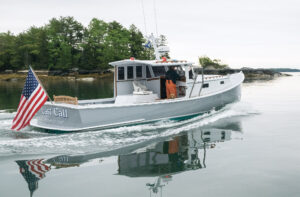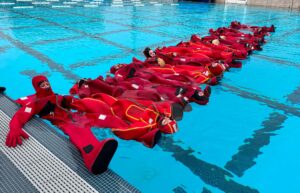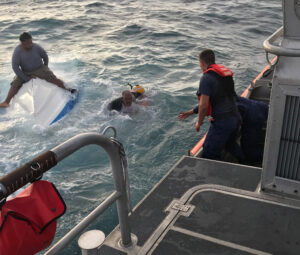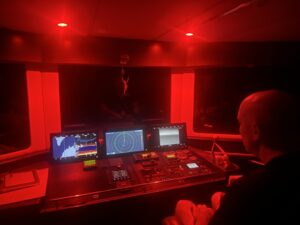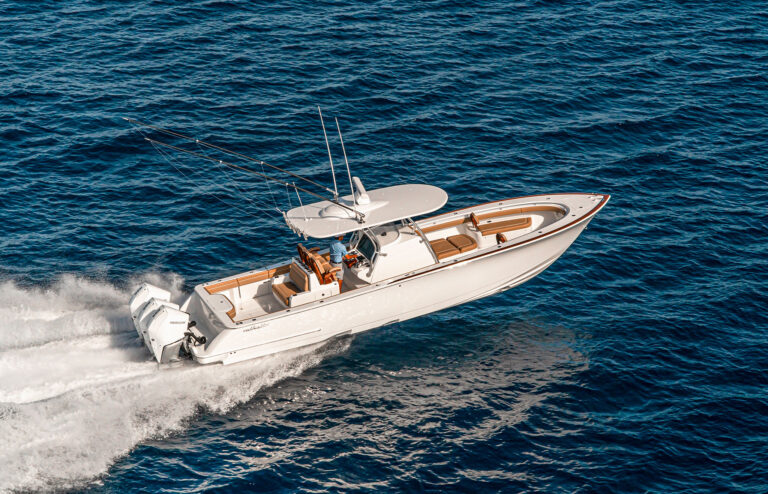My idea of a good time last winter was working on my older sailboat at her slip. But when it got too cold for that I’d pack up and head over to Sarles Boatyard & Marina in the Eastport section of Annapolis, just around the corner from my boat. I’d warm up at the old pot belly wood stove, inhaling the aroma of freshly sawn wood, and look for Dave Hannam.

A craftsman there and a friend, Dave has provided guidance on my amateurish woodworking projects, and I’m always in the market for more boatwork advice.
A rejuvenation of sorts is under way at the oldest working boatyard in Annapolis – now dubbed “Sarles Maritime Village” – with a new group of craftsmen and a new owner and general manager breathing life into the creaky old place. A few years ago, businesswoman Deb Smith bought the Spa Creek property for $4 million from third-generation owner Ben Sarles, who has since died. The yard was established by the Sarles family on the city side of the creek in 1907 and was relocated to an Eastport hillside in 1924.
It’s a hodgepodge of small white buildings, with extension upon extension added through the decades. There is even a yard pet – Knothead, a tame white swan – that hangs out around the requisite “liars’ bench” in a shaded dockside setting with old wooden chairs, tables and benches assembled under an overhead fan. The yard is part of Chesapeake Bay maritime history, and it includes the town’s last surviving marine railway and three covered boat sheds protecting 28 vessels, along with a couple dozen open slips.
An antique belt-driven apparatus in one part of the main workshop is still ready for duty, but it has been retired in favor of new machinery and equipment that modernized the operation. The new owner appreciates reminders of the past, and they’re still evident, including a tiny icehouse still labeled with an outdated price for block ice: 1 cent a pound.
Other handwritten signs are posted here and there, complete with misspellings, warnings and restrictions. A lone gas pump at the end of the dock is long gone, and the attendant’s tiny dock house, with its tiny windows, is now used for storage. The old “Poker Club” also is gone, pre-empted by office space for Smith (who lives in a sweet, old bungalow at the top of the hill on Boucher Avenue) and Tom Weaver, a Kiwi boat designer and former America’s Cup and big-boat syndicate manager and campaigner. He is a boatbuilder, too, and he markets his Eastport line from Annapolis. The boats are built in North Carolina.
The displaced club had a front bar (no back bar) with high stools and was furnished with a beat-up sofa and rickety chairs around the poker table. There was also the requisite television, a fridge with cold beer and a one-armed bandit that dispensed “house” tokens redeemed for cash in a mysterious transaction.
Pipe-smoking, poker-playing Ben Sarles also had his treasured cap collection on display – hundreds of dusty head coverings in various stages of distress and decline. They landed in a trash bin during a giant yard sale after Smith took over. Weaver also got rid of a lot of maritime junk, including 500 old propellers and many engine blocks. When Weaver arrived as general manager two years ago, he began updating things, buying new shop equipment and hiring talent to develop Smith’s idea of assembling a maritime village that provides marine services and repairs on site for wood and fiberglass boats.
Renters include Michael Johnson, owner of Eastport Yacht Sales; Mike Altiere’s Outboard Engine Services; Stephen F. Maloy Marine Services; Andy Fegley’s Yacht Electronic Systems; and “Mighty Joe” Young’s fiberglass repairs at Gleam Inc. Other enterprises include Chesapeake Nautical; Classic Watercraft Restoration; Sarles Kayak Rentals; Annapolis Small Boat Rentals; and Yellow Dick Diving. (I may have missed a few hidden away in outbuildings.)
It seems no surprise to find covered boat sheds here because in the old days boaters preferred that their wood vessels be under cover. But permits are no longer issued for new sheds, and all covered slips are full. Some boats have docked in the same slips for decades, including a needs-work Matthews cabin cruiser dating from the 1940s that has occupied the same slip for 50 years. It never goes anywhere. These sheds have survived blizzards and Tropical Storm Isabel, when all boats under roof had to be evacuated because of a record high tide. (Incidentally, if you want the best guide at Sarles, ask for “Shorty.”)
Woodwork at the shop is handled by a proficient team led by “Big Steve” Halbrook, who last summer paid $600 to transport a free 1950s Bay workboat from the Eastern Shore. He hopes to restore the 36-foot “tuck stern” vessel, which has a tiny cuddy cabin, and use it for recreational crabbing and such. Other shop workers include Hannam, Mike Atwell, Bobby Childs, Mike Lohr and Blair Patterson.
Hannam is building, from scratch, a 16-foot Gar Wood Speedster from original plans. Seven of the eight that were built in the early 1950s in the Thousand Islands region of New York have been restored to show quality. “They were outrageously fast and notorious for becoming dangerously unstable at high speed,” he says. “I’ll install a 240-hp engine with a turbocharger to increase horsepower to 290 and give me a real hard-knuckle ride at 60-plus mph.” He also has refinished an old 16-foot flat-bottom rowboat for Smith and installed a 20-hp outboard for her to tool around in (when she isn’t building birdhouses at a space near the stove).
Last winter the yard was busy with a number of projects, such as a new mahogany transom on one powerboat and major maintenance and ongoing restoration on a unique centerboard sailboat named Moccasin (designed by the late Phil Bolger, a kind of mad scientist of yacht designers). Hannam removed and installed 3,000 bronze screws in one bottom-refastening project that required thousands more steps, including drilling, bedding and plugging with bungs. Other projects included the sistering and/or replacement of broken oak frames, rebuilding and fiberglassing over cockpits and decks, replacing rotten planks, and hull refinishing with roller and brush by Ed “Sandman” Parker.
Another painter and sander is lithe Lawrence “Shorty” Franklin, an all-around hand who also works on bottoms and power-washes boats. He has worked at Sarles for more than 30 years and is cherished as a resident character. Standing just 2 inches above 5 feet, he can squeeze into confined interiors that others can’t reach. He is one of two employees; the rest are contract workers.
I have called on Shorty to work after-hours in my aft quarter-berth areas, which I can’t reach. He happily takes on such assignments as long as he gets a few cold Miller Genuine Drafts. Here’s to you, Shorty.
Jack Sherwood is writer at large for Soundings.
This article originally appeared in the May 2011 issue.


